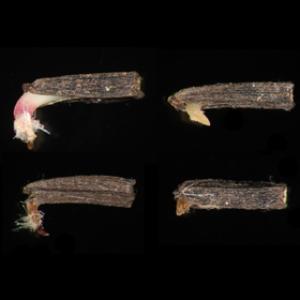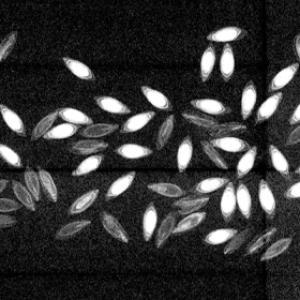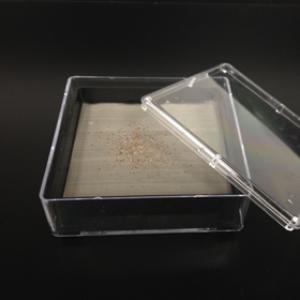Wild plants provide many services that benefit life on Earth. For example, wild plants form ecosystems that sustain life; offer food resources to many types of life forms; produce medicines used by humans; and deliver clothing, shelter, aesthetic appeal, and industrial uses. Wild plants stabilize coastal dune systems thereby protecting life and property from cyclone damage. Wild plants are progenitors of current crops and also serve as a repository of genetic information that is utilized for improving crop production and yield. However, wild plant biodiversity is being lost rapidly due to many human-induced factors. Very little is known about the seed biology of wild plants thereby further complicating the problem of biodiversity loss. Our aim is to begin closing the significant gap that exists in our understanding of wild plant seed biology by addressing the following themes:
Germination Ecology 
Plants have evolved seed dormancy mechanisms that allow germination and seedling establishment to be distributed over time. This is important because plant populations can then respond to beneficial and detrimental environmental signals. In other words, the ability of seeds to act as effective environmental sensors after separation from the mother plant is fundamental to ultimate seedling fate. But what happens when environmental signals, such as temperature, change within relatively short periods of time? Disruption of germination patterns resulting in altered life-history traits or lower genetic variation in seedling populations can be maladaptive. Scarce evidence has been presented regarding the implications of such alterations to changes in seed dormancy and germination status outside sub-arctic regions. Therefore, research questions here focus on how current fluctuations and projected changes in various environmental signals (e.g. temperature) influence dormancy-breaking and germination processes.
|
Seed Physiology
Seeds are remarkable structures that enable plants to flourish from one generation to the next. To do so, seeds must cope with multiple abiotic stressors such as supra-optimal temperatures, desiccation and aging in order to persist, germinate and eventually produce sustainable plant populations. Research in this theme is directed at understanding germination responses of seeds exposed to thermal stress. Likewise, factors influencing aging-related seed deterioration are examined. Interestingly, conditions such as desiccation and cold temperatures limit aging-related seed deterioration. But both conditions impose stress on the seeds. We ask questions related to potential factors that enable seeds to tolerate and recover from these various stresses. Answers to these questions facilitate development of predictive germination models and studies related to ecotypic differentiation and the potential effects of predicted climate change on population biology.
|
Seed Quality
Research in this theme focuses on understanding why seed quality (i.e. viability, vigor, pathogens) varies considerably in wild plant populations. Information related to seed lot quality may justify application of seed technologies such as seed conditioning that can enhance in and ex situ management actions. For example, conditioned seed lots may improve calculation of seeding rates, limit spread of phyto-pathogens and enhance establishment potential. Similarly, knowledge of seed quality may be useful in clarifying the impacts of reduced population sizes on components of fitness.
|
Ex Situ Conservation
Research from all themes merges here to inform conservation practice. For instance, germplasm storage represents an important tool for conserving plant genetic diversity and enhancing production of important taxa. However, seed dormancy may be a confounding factor in determination of seed storage behavior and regeneration of germplasm. Moreover, returns on investments for ecological restoration and conservation projects can be improved when practitioners have information, such as germination timing, that augment their ability to measure outcomes and monitor benchmarks. Seeds must also be tolerant of and recover from various abiotic stresses in order to realize the benefits of ex situ seed banking. Finally, conservation and restoration practitioners depend on seed lots of high quality in order to meet program goals. So, understanding germination ecology, seed physiology and seed quality are important for advancing ex situ conservation.
|
View Google Scholar Publications




